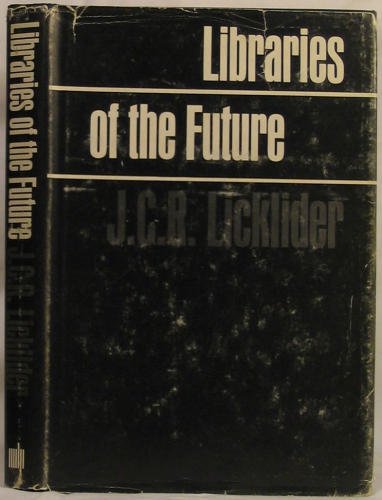Wolfgang Ernst: Digital Memory and the Archive (2012)
Filed under book | Tags: · archive, art, communication, computing, culture, data, history, information, internet, knowledge, machine, media, media archeology, media studies, media theory, memory, photography, radio, sound, storage, technology, television, temporality, time

“In the popular imagination, archives are remote, largely obsolete institutions: either antiquated, inevitably dusty libraries or sinister repositories of personal secrets maintained by police states. Yet the archive is now a ubiquitous feature of digital life. Rather than being deleted, e-mails and other computer files are archived. Media software and cloud storage allow for the instantaneous cataloging and preservation of data, from music, photographs, and videos to personal information gathered by social media sites.
In this digital landscape, the archival-oriented media theories of Wolfgang Ernst are particularly relevant. Digital Memory and the Archive, the first English-language collection of the German media theorist’s work, brings together essays that present Ernst’s controversial materialist approach to media theory and history. His insights are central to the emerging field of media archaeology, which uncovers the role of specific technologies and mechanisms, rather than content, in shaping contemporary culture and society.
Ernst’s interrelated ideas on the archive, machine time and microtemporality, and the new regimes of memory offer a new perspective on both current digital culture and the infrastructure of media historical knowledge. For Ernst, different forms of media systems—from library catalogs to sound recordings—have influenced the content and understanding of the archive and other institutions of memory. At the same time, digital archiving has become a contested site that is highly resistant to curation, thus complicating the creation and preservation of cultural memory and history. ”
Edited and with an Introduction by Jussi Parikka
Publisher University of Minnesota Press, 2012
Volume 39 of Electronic Mediations
ISBN 0816677670, 9780816677672
265 pages
Reviews: Liam Cole Young (Reviews in Cultural Theory, 2013), Peter Ward (Information & Culture, 2014).
PDF (updated on 2025-12-9)
For more from Wolfgang Ernst see Monoskop wiki.
Comment (0)J. C. R. Licklider: Libraries of the Future (1965)
Filed under book | Tags: · computing, knowledge, library, memory, technology

In this book J. C. R. Licklider discussed how information could be stored and retrieved electronically. Although he had not read Vannevar Bush’s “As We May Think,” he realized that Bush’s ideas had been diffused through the computing community enough to have provided a base for his own ideas. His theoretical information network, which he called a “procognitive system” sounds remarkably similar to Tim Berners-Lee’s World Wide Web: “the concept of a ‘desk’ may have changed from passive to active: a desk may be primarily a display-and-control station in a telecommunication-telecomputation system-and its most vital part may be the cable (‘umbilical cord’) that connects it, via a wall socket, into the procognitive utility net”. This system could be used to connect the user to “everyday business, industrial, government, and professional information, and perhaps, also to news, entertainment, and education.” (source)
Based on a study sponsored by the Council on Library Resources, Inc., and conducted by Bolt, Beranek, and Newman, Inc., between November 1961 and November 1963.
Publisher MIT Press, 1965
ISBN 026212016X, 9780262120166
219 pages
via Archive.org (where it is not available anymore)
André Leroi-Gourhan: Gesture and Speech (1964-65–) [ES, IT, EN]
Filed under book | Tags: · aesthetics, anthropology, art, art history, cognition, language, memory, paleontology, prehistory, rhythm, speech, technics, technology

“André Leroi-Gourhan (1911-1986) was an anthropologist and paleontologist whose theoretical endeavors extended well beyond those realms to encompass the culture of the twentieth century and its most advanced developments. His bold and coherent revision of both analytic and archaeological methods revolutionized the study of prehistoric culture. His adoption of the structuralist method for the analysis of prehistoric art enabled a radical rethinking and clearer understanding of its nature, with resulting implications for the understanding of the art of our own times, and for a broad range of contemporary issues.
Leroi-Gourhan was, for example, concerned with questions of communication, particularly the ways in which new techniques of communication reshape our understanding of language and writing. His work in this field has proved catalytic for the thinking of other major theorists, among them Jacques Derrida. Gesture and Speech combines in one volume Technics and Language and Memory and Rhythms, which are the cornerstones of Leroi-Gourhan’s comprehensive theory of human behavior and cultural development.
In Technics and Language, Leroi-Gourhan looks at prehistoric technology in relation to the development of cognitive and linguistic faculties, expanding on the cultural ramifications of erect posture, a short face, a free hand during locomotion, and possession of movable implements.
Memory and Rhythms approaches its subject from the standpoints of sociology and aesthetics. Here Leroi-Gourhan addresses the problems of instinct and intelligence. He defines the relationship between aesthetic behavior, on the one hand, and species attitudes and the personalization of ethnic groups, on the other, and undertakes a sweeping aesthetic analysis from visceral perception to figurative art, including a discussion of the ‘language of forms’ that makes figurative art an abstract expression of language.”
Originally published in French under the title Le Geste et la parole (t.1: Technique et langage; t.2: La mémoire et les rythmes), Albin Michel, Paris, 1964 and 1965.
Translated by Anna Bostock Berger
Introduction by Randall White
Publisher MIT Press, 1993
October Books series
ISBN 0262121735, 9780262121736
453 pages
Publisher (EN)
El gesto y la palabra (Spanish, trans. Felipe Carrera D., 1971, 20 MB, added on 2015-2-19)
Il gesto e la parola (Italian, trans. Franco Zannino, 1977, 9 MB, added on 2015-2-19)
Gesture and Speech (English, trans. Anna Bostock Berger, 1993, 10 MB)

